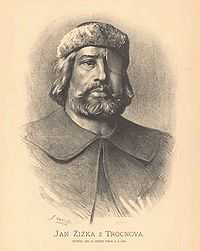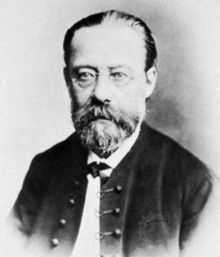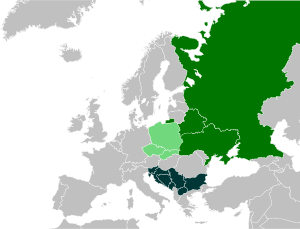Czechs
| |||||||||||||||||||||||||||||||||||||||||
| Total population | |||||||||||||||||||||||||||||||||||||||||
|---|---|---|---|---|---|---|---|---|---|---|---|---|---|---|---|---|---|---|---|---|---|---|---|---|---|---|---|---|---|---|---|---|---|---|---|---|---|---|---|---|---|
| 10-12 million | |||||||||||||||||||||||||||||||||||||||||
| Regions with significant populations | |||||||||||||||||||||||||||||||||||||||||
|
| |||||||||||||||||||||||||||||||||||||||||
|
1,462,000[3] | |||||||||||||||||||||||||||||||||||||||||
| 94,805[4] | |||||||||||||||||||||||||||||||||||||||||
| 80,000-90,000 | |||||||||||||||||||||||||||||||||||||||||
| 30,000–90,000 | |||||||||||||||||||||||||||||||||||||||||
| 46,484 | |||||||||||||||||||||||||||||||||||||||||
| 30,367[5] | |||||||||||||||||||||||||||||||||||||||||
| 38,000 | |||||||||||||||||||||||||||||||||||||||||
| 21,196[6] | |||||||||||||||||||||||||||||||||||||||||
| 20,000 | |||||||||||||||||||||||||||||||||||||||||
|
20,000 | |||||||||||||||||||||||||||||||||||||||||
| |||||||||||||||||||||||||||||||||||||||||
| Languages | |||||||||||||||||||||||||||||||||||||||||
| Czech | |||||||||||||||||||||||||||||||||||||||||
| Religion | |||||||||||||||||||||||||||||||||||||||||
| Mainly non-religious (Atheism, Agnosticism, Deism) or Roman Catholicism[11] | |||||||||||||||||||||||||||||||||||||||||
| Related ethnic groups | |||||||||||||||||||||||||||||||||||||||||
| Other West Slavs, Austrians, Germans, Celts | |||||||||||||||||||||||||||||||||||||||||
Czechs, or Czech people (Czech: Češi, Czech pronunciation: [ˈtʃɛʃɪ]) are a nation and ethnic group native to the Czech Republic in Central Europe. They share a common culture, history and speak the Czech language.
Ethnic Czechs were called Bohemians in English until the early 20th century, referring to the late Iron Age tribe of Celtic Boii and their land Bohemia. During the Migration Period Germanic tribes moved westwards and around the 6th century, West Slavs settled in the area and formed an independent principality in the 9th century.
Czech people and their descendants live in United States, Canada, Italy, the United Kingdom, Germany, Slovakia, Australia, Argentina, Austria and Switzerland among others countries.
History
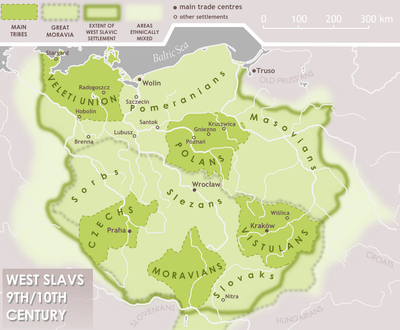

The Czech people are primarily descended from Western Slavs[12] who settled in Bohemia, Moravia and Austria sometime during the 6th or 7th centuries.[13] They might have encountered a residual Germanic (generically Suebic) population, but the only evidence for continued "Germanic" settlement into the 6th century comes from northern and central Bohemia.[14]
According to a popular myth, the Slavic settlers come from Forefather Čech who settled at Říp Mountain.
The Duchy of Bohemia emerged in the late 9th century. In 880, Prague Castle was constructed by Prince Bořivoj, founder of the Přemyslid dynasty and the city of Prague was established. Vratislav II was the first Czech king in 1085 and the Duchy was raised to a hereditary kingdom under Ottokar I in 1198.

The second half of the 13th century was a period of advancing German immigration into Czech lands. The number of Czechs who have at least partly German ancestry today probably runs into hundreds of thousands.[15] The Habsburg Monarchy focused much of its power on religious wars against the Protestants. While these religious wars were taking place, the Czech estates revolted against Habsburg from 1546 to 1547 but were ultimately defeated.[16]
Defenestrations of Prague in 1618, signaled an open revolt by the Bohemian estates against the Habsburgs and started the Thirty Years' War. After the Battle of White Mountain in 1620, all Czech lands were declared hereditary property of the Habsburg family. The German language was made equal to the Czech language.
Czech patriotic authors tend to call the following period, from 1620 to 1648 until the late 18th century, the "Dark Age". It is characterized by devastation by foreign troops; Germanization; and economic and political decline. It is estimated that the population of the Czech lands declined by a third.[17]
The 18th and 19th century is characterized by the Czech National Revival, focusing to revive Czech culture and national identity.
Since the turn of the 20th century, Chicago is the city with the third largest Czech population, after Prague and Vienna.[18][19]
During World War I, Czechoslovak Legions fought in France, Italy and Russia against the Central Powers and in 1918 was proclaimed independent Czechoslovakia. Czechs formed the leading class in the new state from the remnants of the Austrian-Hungarian Monarchy. After 1933, Czechoslovakia remained the only democracy in central and eastern Europe.
In 1938 the Munich Agreement severed the Sudetenland, with a considerable Czech minority, from Czechoslovakia, and in 1939 the German Nazi regime established the Protectorate of Bohemia and Moravia for the so-calling "remaining Czechia" (Resttschechei). Emil Hácha became president of the protectorate under Nazi domination, which only allowed pro-Nazi Czech associations and tended to stress ties of the Czechs with the Bohemian Germans and other parts of the German people, in order to facilitate assimilation by Germanization. In Lidice, Ležáky and Javoříčko the Nazi authorities committed war crimes against the local Czech population. On May 2, 1945 the Prague Uprising reached its peak, supported by the Russian Liberation Army. The post-war expulsion of Germans from Czechoslovakia and the immediate reprisals against Germans and Nazi collaborators by Czech resistance and the Czechoslovak state authorities, made Czechs – especially in the early 1950s – settle alongside Slovaks and Romani people in the former lands of the Sudeten Germans, who had been deported to East Germany, West Germany and Austria according to the Potsdam Conference and Yalta Conference.
The Warsaw Pact invasion of Czechoslovakia in 1968 was followed by a wave of emigration, unseen before and stopped shortly after (estimate: 70,000 immediately, 300,000 in total),[20] typically of highly qualified people.
Tens of thousands of Czechs had repatriated from Volhynia and Banat after World War II. Since the 1990s, the Czech Republic has been working to repatriate Romania and Kazakhstan's ethnic Czechs.[21][22]
Following the Czech Republic's entry into the European Union in May 2004, Czechs gradually gained the right to work in EU countries without a work permit.[23]
Genetics
The population of the Czech lands has been influenced by different human migrations that wide-crossed Europe over time. In their Y-DNA haplogroups, which are inherited along the male line, Czechs have shown a mix of Eastern and Western European traits. 34.2% of Czech males belong to R1a, which is particularly common in a large region extending from South Asia and Southern Siberia to Central Europe and Scandinavia. Within the Czech Republic, the proportion of R1a seems to gradually increase from west to east [24] According to a 2000 study, 35.6% of Czech males have haplogroup R1b, which is very common in Western Europe among Germanic and Celtic nations, but rare among Slavic nations.[25]
A high frequency of mutation of the G551D gene CFTR (cystic fibrosis transmembrane conductance regulator), causing cystic fibrosis is found in the Czech Republic, Austria, and among the Celtic nations: Wales, Scotland, Cornwall, Ireland and Brittany.[26]
About 3% of inhabitants of Moravia have also intermixed with Central Asian nomadic tribes, who migrated into Central and Eastern Europe in the early Middle Ages.[27]
Notable figures

Mythology
There are also ancient folk stories about the Czech people, such as the Forefather Čech, who according to legend brought the tribe of Czechs into its land,[28] or Přemysl, the Ploughman,[29] who started the dynasty that ruled for 400 years until 1306.
Historical figures
The most successful and influential of all Czech kings was Charles IV, who also became the Holy Roman Emperor.[30] The Luxembourg dynasty represents the heights of Czech (Bohemian) statehood territorial and influence as well as advancement in many areas of human endeavors.[31]
Many people are considered national heroes and cultural icons, many national stories concern their lives. Jan Hus was a religious reformist from the 15th century and spiritual father of the Hussite Movement.[32] The teacher of nations Jan Amos Komenský is also considered a notable figure in Czech history.[33] Josef Jungmann is often credited for expanding the modern Czech language, and preventing its extinction.[34]
Modern politicians

One of the most notable Velvet Revolution figures is Václav Havel, who became the first president of the independent Czech Republic.[35] The current president (3rd) is Miloš Zeman.[36]
The Czech Republic has had multiple prime ministers the first of which was latter president Klaus, the second under Havel was Josef Tošovský[37] and the last prime minister under Havel was prominent ČSSD member Miloš Zeman.[38]
Sports
Sports have also been a contributor to famous Czechs especially tennis, soccer, hockey, and athletics:
- Tennis – Ivan Lendl, Martina Navratilova, Petra Kvitová,[39] Tomáš Berdych, Lukáš Rosol, Radek Štěpánek
- Football – Pavel Nedvěd, Antonín Panenka, Tomáš Rosický, Karel Poborský, Patrik Berger,[40][41] Petr Čech
- Hockey – Jaromír Jágr, Dominik Hašek, Petr Nedvěd, Patrik Eliáš, Tomáš Plekanec
- Athletics – Emil Zátopek, Roman Šebrle, Jan Železný, Barbora Špotáková
The arts
Music
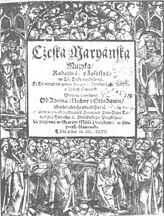
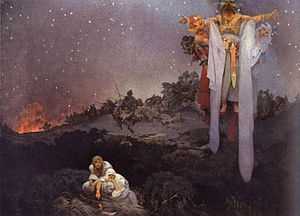
Czech music started develop by first significant pieces, created in the 11th century.[42] The great progress of Czech artificial music has begun in the end of Renaissance and early Baroque era, concretely in works of Adam Václav Michna z Otradovic, where the specific character of Czech music was rising up by using the influence of genuine folk music. This tradition determined the development of Czech music and has remained the main sign in the works of great Czech composers of almost all eras – Jan Dismas Zelenka and Bohuslav Matěj Černohorský in Baroque, Bedřich Smetana and Antonín Dvořák in Romanticism, Leoš Janáček and Bohuslav Martinů in modern classical or Miloslav Kabeláč in contemporary classical music.
Czech musicians played also important role in the development of European music. Jan Václav Antonín Stamic in 18th-century contributed to the creation of Classicism in music[43] by innovations of compositional forms and founding of Mannheim school, similarly Antonín Rejcha's experiments prefigured new compositional techniques in 19th-century.[44] The influence of Czech musicians has been gone later beyond the borders of European continent, when Antonín Dvořák brought into life new American classical music style, using the potential of the richness of ethnic music of that country during his mission in USA. The contribution of Alois Hába to microtonal music in 20th-century must be also mentioned.
Czech music reached as far as Qing China. Karel Slavíček was a Jesuit missionary, scientist and sinologist who was introduced to the Kangxi Emperor on February 3, 1717 in Beijing. The emperor favored him and employed him as court musician. (Slavíček was a Spinet player).[45]
Some notable Czech musicians who came down in modern history are US-based composer and guitarist Ivan Král or rock band The Plastic People of the Universe which played an important part in the underground movement during the communist regime.
Literature
Poet Jaroslav Seifert was awarded the Nobel Literature Prize.[39] Božena Němcová has become a cultural icon and gained much fame for her book Babička.[46]
Painting
Mikoláš Aleš was a painter, known for redesigning the Prague National Theatre.[47]
Alphonse Mucha was an influential artist in the Art Nouveau movement of the Edwardian period.
František Kupka was a pioneer and co-founder of the abstract art movement.
Film
Film director Miloš Forman, known best for his movie, One Flew over the Cuckoo's Nest is of Czech origin and started his career in Czechoslovakia.[48] The influential surrealist filmmaker and animator Jan Švankmajer was born in Prague and has been resident in the Czech Republic throughout his life.
National performers such as Karel Kryl,[49] Helena Vondráčková,[50] Karel Gott[51] (singers), Zdeněk Svěrák (director and actor), Vlastimil Brodský,[52] Vladimír Menšík[53] (actors) or Ivan Mládek (comedian), have also made a mark in modern Czech history.
Saints
Czech culture involves many saints,[54] most notably St. Wenceslaus (Václav), patron of the Czech nation,[55] St. John of Nepomuk (Jan Nepomucký),[56] St. Adalbert (Vojtěch),[57] Saint Procopius or St. Agnes of Bohemia (Anežka Česká).[58]
Geography

The Czech Republic is compound from 3 historical lands: Bohemia, Moravia and Czech Silesia;[59] today the country is divided into 14 regions.[60] There is a slightly varying culture in each of the lands.[61] Each part speaks Czech but there are certain local dialects (like Central Bohemian, Moravian, Těšínian, etc.).[62]
Czech language
The Czech language is spoken by approximately 12 million people around the world including most of the people in the Czech Republic.[63] It developed from the Proto-Slavic language in the 10th century[63][64] and is mutually intelligible with the Slovak language.[65]
See also
- List of Czechs
- Demographics of the Czech Republic
- The Greatest Czech
- Czech American
- Czech Argentinean
- Czech Australian
- Czech Brazilian
- Czech British
- Czech Canadian
Further reading
- Hroch, Miroslav (2004). "From ethnic group toward the modern nation: the Czech case". Nations and Nationalism 10 (1/2): 95–107. doi:10.1111/j.1354-5078.2004.00157.x.
- Berka, Petr and Palan, Ales and Stastny, Petr: Xenophobe's Guide to the Czechs, Oval Books, London, 2008
- Holý, Ladislav: The Little and the Great Czech Nation, Cambridge University, 1996
References
Footnotes
- ↑ This number is a lower estimate, as 2,742,669 people opted out declaring ethnicity in 2011.
Notes
- ↑ Obyvatelstvo podle národnosti podle krajů
- ↑ "CIA - The World Factbook - Czech Republic". Retrieved 14 November 2014.
- ↑ "2004 survey". Retrieved 14 November 2014.
- ↑ "Ethnic Origin (264), Single and Multiple Ethnic Origin Responses (3), Generation Status (4), Age Groups (10) and Sex (3) for the Population in Private Households of Canada, Provinces, Territories, Census Metropolitan Areas and Census Agglomerations, 2011 National Household Survey".
- ↑ Štatistický úrad SR
- ↑ "Data & analysis". Retrieved 18 March 2015.
- ↑ "CSO Emigration" (PDF). Census Office Ireland. Retrieved January 29, 2013.
- ↑ Попис становништва, домаћинстава и станова 2011. у Републици Србији: Становништво према националној припадности - „Oстали“ етничке заједнице са мање од 2000 припадника и двојако изјашњени
- ↑ Joshua Project. "People Groups". Retrieved 14 November 2014.
- ↑ "webzdarma - Soubor nenalezen / File not found". Retrieved 14 November 2014.
- ↑ "Population by religious belief and by municipality size groups". Czech Statistical Office. Retrieved 2012-04-23.
- ↑ Bohemia and Poland. Chapter 20.pp 512-513. [in:] Timothy Reuter. The New Cambridge Medieval History: c. 900-c.1024. 2000
- ↑ The exact dating of Slavic settlement is a matter of dispute amongst scholars. See Eg Curta ("The Slavs in Bohemia: A Response to my critics; 2009") who favours a 7th century settlement versus Nada Profantova, who argues a 6th century settlement
- ↑ Jaroslav Jirik "Bohemian Barbarians. Bohemia in late Antiquity", in Neglected Barbarians Brepols 2010
- ↑ "Ethnic German Minorities in the Czech Republic, Poland and Slovakia". Retrieved 14 November 2014.
- ↑ "The Habsburg Monarchy and Rudolph II". Retrieved 14 November 2014.
- ↑ Agnew, Hugh (2004). The Czechs and the Lands of the Bohemian Crown. Stanford: Hoover Press. p. 72. ISBN 0-8179-4492-3.
- ↑ Czechs and Bohemians
- ↑ Czech and Slovak roots in Vienna, wieninternational.at
- ↑ ""Day when tanks destroyed Czech dreams of Prague Spring" (Den, kdy tanky zlikvidovaly české sny Pražského jara) at Britské Listy (British Letters)". Retrieved 14 November 2014.
- ↑ The Czech ethnic minority in Romania, 29-12-2004 - Radio Prague
- ↑ Government completes 13-year program to integrate Kazakh Czechs, The Prague Post, 31 October 2007
- ↑ "Práce v Evropské unii: jaké máme možnosti? penize.cz". 23 February 2007. Retrieved 14 November 2014.
- ↑ F. Luca, F. Di Giacomo, T. Benincasa et al., "Y-Chromosomal Variation in the Czech Republic," American Journal of Physical Anthropology 132:132–139 (2007).
- ↑ O. Semino et al, The genetic legacy of paleolithic Homo sapiens sapiens in extant Europeans: a Y chromosome perspective, Science, vol. 290 (2000), pp. 1155-59.
- ↑ Doc. Dr. Milan Macek, CSc., Dr. Milan Macek ml., Dr. Alice Krebsová, Doc. Dr. V. Vávrová, DrSc. ,Centrum pro diagnostiku a léčbu cystické fibrosy, RELATIVNĚ VYSOKÝ VÝSKYT MUTACÍ G551D A CFTRDEL21KB CFTR GENU V ČESKÉ REPUBLICE U PACIENTŮ S CYSTICKOU FIBROSOU OBJEKTIVNĚ PROKAZUJE, ŽE NAŠE POPULACE JE SLOVANSKÉHO A KELTSKÉHO PŮVODU. Dostupné on-line
- ↑ "Mitochondrial DNA Variability in the Czech Population, with Application to the Ethnic History of Slavs". Retrieved 14 November 2014.
- ↑ The Polish Eagle
- ↑
- ↑ "Charles IV (Karel IV.) - Czech king and Holy Roman Emperor". Retrieved 18 March 2015.
- ↑ "Travel guide - Luxembourg dynasty (1310 - 1378) - accommodation in hotels and apartments - Travel.cz". Retrieved 18 March 2015.
- ↑ "Jan Hus". Retrieved 18 March 2015.
- ↑ Jan Amos Comenius
- ↑ Josef Jungmann (1773–1847)
- ↑ Václav Havel
- ↑ "VACLAV HAVEL". Retrieved 18 March 2015.
- ↑ "Rejstřík předsedů vlád". Retrieved 18 March 2015.
- ↑ "Radio Prague - Milos Zeman - outgoing prime minister". Retrieved 18 March 2015.
- ↑ 39.0 39.1 "CzechSite: Famous Czechs". Retrieved 18 March 2015.
- ↑ "Radio Prague - Antonin Panenka - the footballer Pele described as "either a genius or a madman"". Retrieved 18 March 2015.
- ↑ Josef, Ladislav. "Masopust's memory lingers on". Archived from the original on 2007-12-22. Retrieved 2008-02-01.
- ↑ http://www.eu2009.cz/en/czech-republic/music/history/history-of-czech-music-2374 History of Czech music
- ↑ http://www.czechmusic.net/klasika/stamic_jv.htm Jan Václav Antonín Stamic (in Czech)
- ↑ http://www.classical.net/music/comp.lst/reicha.php Antonín Rejcha
- ↑ "Český jezuita na čínském dvoře". cinsky.cz. 2009-02-26. Retrieved 2011-02-06.
- ↑ Partridge, James. "Book Review: The Grandmother". Central Europe Review. Retrieved 2008-02-10.
- ↑ Tyman, Jaroslav. "Mikoláš Aleš". Retrieved 2008-02-11.
- ↑ Erickson, Hal. "Milos Forman, biography". Allmovie. Retrieved 2008-02-10.
- ↑ "Karel Kryl -". Retrieved 18 March 2015.
- ↑ The official website of Helena Vondráčková
- ↑ "Karel Gott". Ministry of Foreign Affairs of the Czech Republic. Archived from the original on 2008-01-01. Retrieved 2008-02-01.
- ↑ "Vlastimil Brodsky - Czech Film - Worldpress.org". Retrieved 18 March 2015.
- ↑ "Czech-Slovak film Database, Vladimír Menšík". POMO Media Group. Retrieved 2008-02-11.
- ↑ Maurice, Edmund (1908). The story of Bohemia from the earliest times to the fall of national independence in 1620;: With a short summary of later events. Fisher, Unwin.
- ↑ Mershman, Francis. "St. Wenceslaus". Kevin Knight. Retrieved 2008-02-10.
- ↑ Krčmář, Luděk. "St. John of Nepomuk - life". MultiMedia Activity. Retrieved 2008-02-10.
- ↑ Attwater, Donald and Catherine Rachel John. The Penguin Dictionary of Saints. 3rd edition. New York: Penguin Books, 1993. ISBN 0-14-051312-4.
- ↑ "Order of the Knights of the Cross with the Red Star". Retrieved 18 March 2015.
- ↑ "Political subdivision of Bohemia, Moravia and Silesia". Retrieved 18 March 2015.
- ↑ "The Area of the Czech Republic". Retrieved 18 March 2015.
- ↑ Czech regions - Czech republic
- ↑ Czech
- ↑ 63.0 63.1 "Czech Language". Ministry of Foreign Affairs of the Czech Republic. Archived from the original on 2008-01-18. Retrieved 2008-02-01.
- ↑ http://www.kortlandt.nl/publications/art066e.pdf
- ↑ "The Czech Language on WWW". Retrieved 18 March 2015.
External links
| Wikimedia Commons has media related to Czechs. |
| ||||||||||||||||
| ||||||||||||||||||


